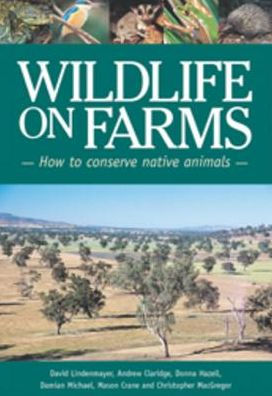Many landowners are interested in the native animals that live on their farms or once occurred there. In particular they want to know why particular species are present (or absent), what they can do to encourage them to visit, and what they might do to keep them there.
Wildlife on Farms outlines the key features of animal habitats—large flowering trees, hollow trees, ground cover, understorey vegetation, dams and watercourses—and describes why landholders should conserve these habitats to encourage wildlife on their farms. It shows how wildlife conservation can be integrated with farm management and the benefits this can bring.
The book presents 29 example species—mammals, birds, reptiles and amphibians—that are common to a large part of southern and eastern Australia. Each entry gives the distinguishing features of the animal, key features of its required habitat, and what can be done on a farm to better conserve the species.
Many landowners are interested in the native animals that live on their farms or once occurred there. In particular they want to know why particular species are present (or absent), what they can do to encourage them to visit, and what they might do to keep them there.
Wildlife on Farms outlines the key features of animal habitats—large flowering trees, hollow trees, ground cover, understorey vegetation, dams and watercourses—and describes why landholders should conserve these habitats to encourage wildlife on their farms. It shows how wildlife conservation can be integrated with farm management and the benefits this can bring.
The book presents 29 example species—mammals, birds, reptiles and amphibians—that are common to a large part of southern and eastern Australia. Each entry gives the distinguishing features of the animal, key features of its required habitat, and what can be done on a farm to better conserve the species.

Wildlife on Farms: How to Conserve Native Animals
128
Wildlife on Farms: How to Conserve Native Animals
128
Product Details
| ISBN-13: | 9780643099845 |
|---|---|
| Publisher: | CSIRO PUBLISHING |
| Publication date: | 03/18/2003 |
| Sold by: | Barnes & Noble |
| Format: | eBook |
| Pages: | 128 |
| File size: | 7 MB |
